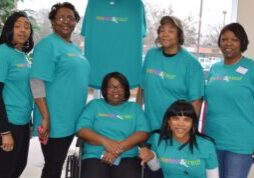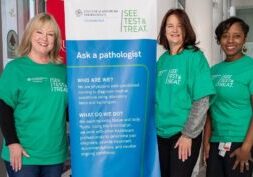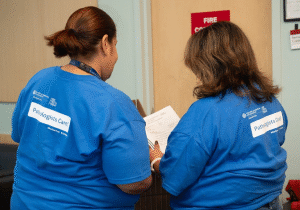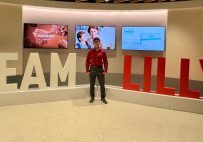Foundation Board Member Champions Follow Up Care

Terrence Shirley, MPH, CEO of the Community Health Center Association of Mississippi, knows the importance of quality health care for all communities. That’s one reason he joined the CAP Foundation Board of Directors in December 2022. He has been working in the industry since 1980, but he’s been part of the health care world for much longer.
“Actually, I was born into the world of health,” Shirley said. “My father was a pediatrician and he helped establish one of the very first community health centers in the country in Mound Bayou, Mississippi.” There are now about 1,400 community health centers serving patients across the country, according to Shirley.
Shirley explains that the project was close to home in many ways. His mother grew up in Mound Bayou and knew the issues facing the small, rural community including how much a health center would positively impact the area.
Shirley’s father would also go on to establish Jackson-Hinds Comprehensive Health Center in 1970, which would become the largest community health institution in central Mississippi and serves its largely Black patient populations with a multitude of health and social services.
Shirley was there since the beginning in his childhood, helping in whatever he could like clearing brush from the health center campus with his brother and learning more about the health care industry.
Fast forward a few years and Shirley would continue to learn and gain experience in the industry: first as an undergraduate at the University of Southern Mississippi and then through a Master of Public Health degree from the University of Tennessee.
His road to the CAP Foundation Board of Directors is full of experience at a variety of institutions specializing in community and public health initiatives including Tampa Community Health Centers and the University of Mississippi Medical Center (UMMC) Cancer Institute in Jackson. The latter is where Shirley first became acquainted with the CAP Foundation and their flagship program See, Test & Treat, which provides same-day cervical and breast cancer screening to medically underserved patients.
Shirley and his team at the UMMC Cancer Institute helped with additional funding and conducted screening in their radiology department for their first See, Test & Treat event over six years ago. It was the start of a wonderful partnership to benefit their patient community, he said.
“Outside our institution even we got community buy in; from the health department and others,” he explained. “Everybody has bought into it, and they look forward to it.”
“Community buy in” included Shirley’s own family. His daughter Alexa Lampkin, DMD, provided dental services at See, Test & Treat, carrying on the family’s commitment to community health care. The two also co-authored a paper with others from the team for the Journal of Cancer Education that reported the efficacy and impact of their programs titled “The College of American Pathologists Foundation’s See, Test & Treat Program: An Evaluation of a One-Day Cancer Screening Program Implemented in Mississippi.”
Not only does the UMMC See, Test & Treat provide cancer screening, nutritional health aid, dental examinations, and more, but Shirley said it helps with one of the biggest barriers to effective health care: follow up with patients.
The resources required to successfully contact, schedule, and see patients for follow-up care remains a huge issue, according to Shirley. Patients may lack insurance or transportation or have a multitude of other barriers that keep them from seeking or keeping follow-up appointments.
He said, “We’ve found a lot of stage threes and stage fours during our screenings, so getting people to understand that we need to be doing this screening earlier in your life and get them to value primary care is very important.”
See, Test & Treat also acts as an entry point to regular care, Shirley explained. Patients are not only signed up for follow-up care after their screenings at See, Test & Treat, but they’re also entered into a provider home.
Shirley thinks the CAP Foundation and See, Test & Treat will be an important resource in the future. He wants to work with other members of the Board and host institutions to explore options outside of the institution itself to help alleviate the burden on patients and reach them more directly with services and education for a more vested interest in their health.
“How can we get an event like this outside the footprint of institutions like UMMC? How can we take it directly to the community?” he asked. Shirley mentions the rise in mobile health facilities brought on by the pandemic and thinks these options could work especially well in rural areas for events like See, Test & Treat and community health centers.
It’s an idea worth exploring. Even though See, Test & Treat provides services to about 100 women in a daylong event, there are many more in the community who need care.
“The frustrating thing can be once we do the statistics,” Shirley explained, “is that if we had 1 in 10 abnormal results, then multiply that by 100,000 for the entire patient population of Jackson. How many people out there have something that’s going undetected and untreated?”
Learn more about how you can get involved and ways to donate to the CAP Foundation and its See, Test & Treat program.
More Stories
Why Donate
Every person deserves a diagnosis. Support care beyond the microscope. Expand access to pathology-locally and globally.










